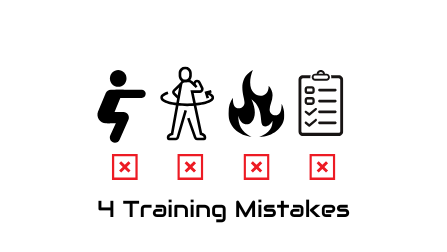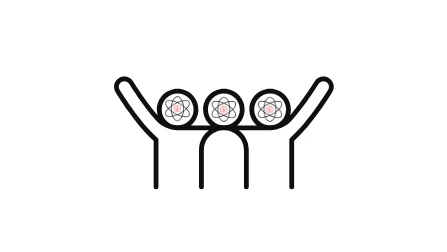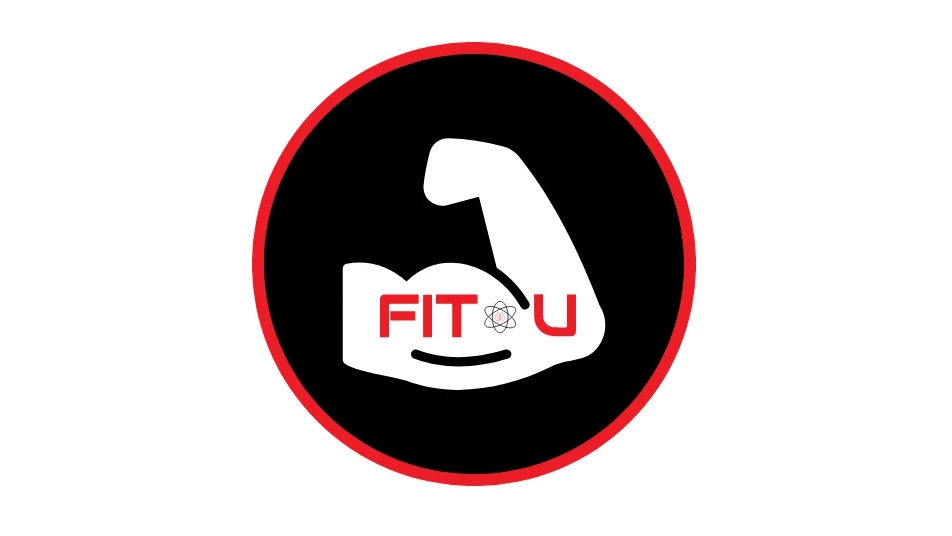The 4 Most Common Training Mistakes (and How to Fix Them)
Studio Fit U
Training
Published: 12/03/2025
Update: 25/03/2025

Table of contents
If you’ve recently started training or even if you’ve been at it for a while - there are a handful of common mistakes that can slow down your progress. These mistakes are simple to fix, yet many people fall into these traps, leading to poor results, less muscle development, and even injuries.
Poor Exercise Form
This is probably the most common mistake. It doesn’t necessarily mean you have bad form (even if it can), but usually that your technique might not be fully optimized for the results you’re aiming for. For example, you could be bench pressing to build your chest, but if your form is off, you might not be effectively targeting your chest muscles. If you continue doing this for weeks without correcting it, not only will you struggle to see progress, but you’ll also reinforce bad habits that will take even longer to unlearn.
On paper, fixing your technique sounds simple, but the biggest challenge is your ego. Learning the right movement patterns often means lowering the weight, slowing down the tempo, and making small corrections—things that can feel frustrating when you’re used to lifting heavier. Working with a coach can make a huge difference, but if that’s not an option, recording yourself and analyzing your form is a great way to get started on this.
Skipping Warm-Ups and Mobility Work
Let’s be honest. Warm-ups aren’t the most exciting part of training. But trust me, your body loves them. A proper warm-up prepares your joints, tendons, and muscles for better activation, reducing your risk of injury and improving overall performance.
It doesn’t have to take long, just 5 minutes is better than nothing. If you have specific needs, you can extend it to 10-15 minutes. A good warm-up generally consists of two parts:
General warm-up: This gets your whole body moving and increases circulation. You can use a cardio machine for this (e.g., a few minutes of cycling or rowing).
Specific warm-up: This targets the muscles you’ll be training. For example, if you’re doing a lower body workout, bodyweight squats can help activate the right muscles before adding weight.
Not Training with Enough Intensity
Too many people go through the motions without pushing themselves close to failure. The problem? Training close to failure is a key driver of muscle growth. If you’re not testing your limits, your body won’t adapt, and your progress will stall.
The golden rule here is progressive overload—gradually increasing weight, reps, or intensity over time. But before you can apply it, you need to understand what failure actually feels like. In simple terms, failure means you can’t perform another rep with good form. To build muscle effectively, most of your sets should be taken to about 1 to 3 reps shy of failure—meaning you should finish your set knowing you could only squeeze out 1-3 more reps before breaking form.
Doing Too Much Random Training Without a Plan
Having a plan is your best friend : not just for training, but for nutrition and recovery too. The problem is, if you’re constantly jumping between workouts without tracking your progress, you’re basically flying blind. This inconsistency makes it almost impossible to see real improvements over time.
A structured training plan doesn’t mean your workouts have to be boring. It simply ensures that you’re progressing toward your goals. Whether your focus is building strength, gaining muscle, or improving endurance, the key is to stick with a program for 6-8 weeks before making major changes. Making sure you’re progressing on your exercises.
That said, structure doesn’t mean rigidity. It’s okay to switch things up when you feel like it—training should still be enjoyable. The key is balancing consistency with flexibility so you stay engaged while making measurable progress.
Final Thoughts
Training mistakes are common, but they’re also easy to fix once you’re aware of them. By improving your form, warming up properly, training with the right intensity, and following a structured plan, you’ll set yourself up for steady progress and long-term success. Let us know if you need help with any of it.
In the same category


The Benefits of Semi-Private Personal Training and Finding the Right Fitness Community
Training
Learn more
Personal & Personalized Training
MONTREAL
4824 Ch. de la Côte-des-Neiges, Montréal, QC H3V 1G4